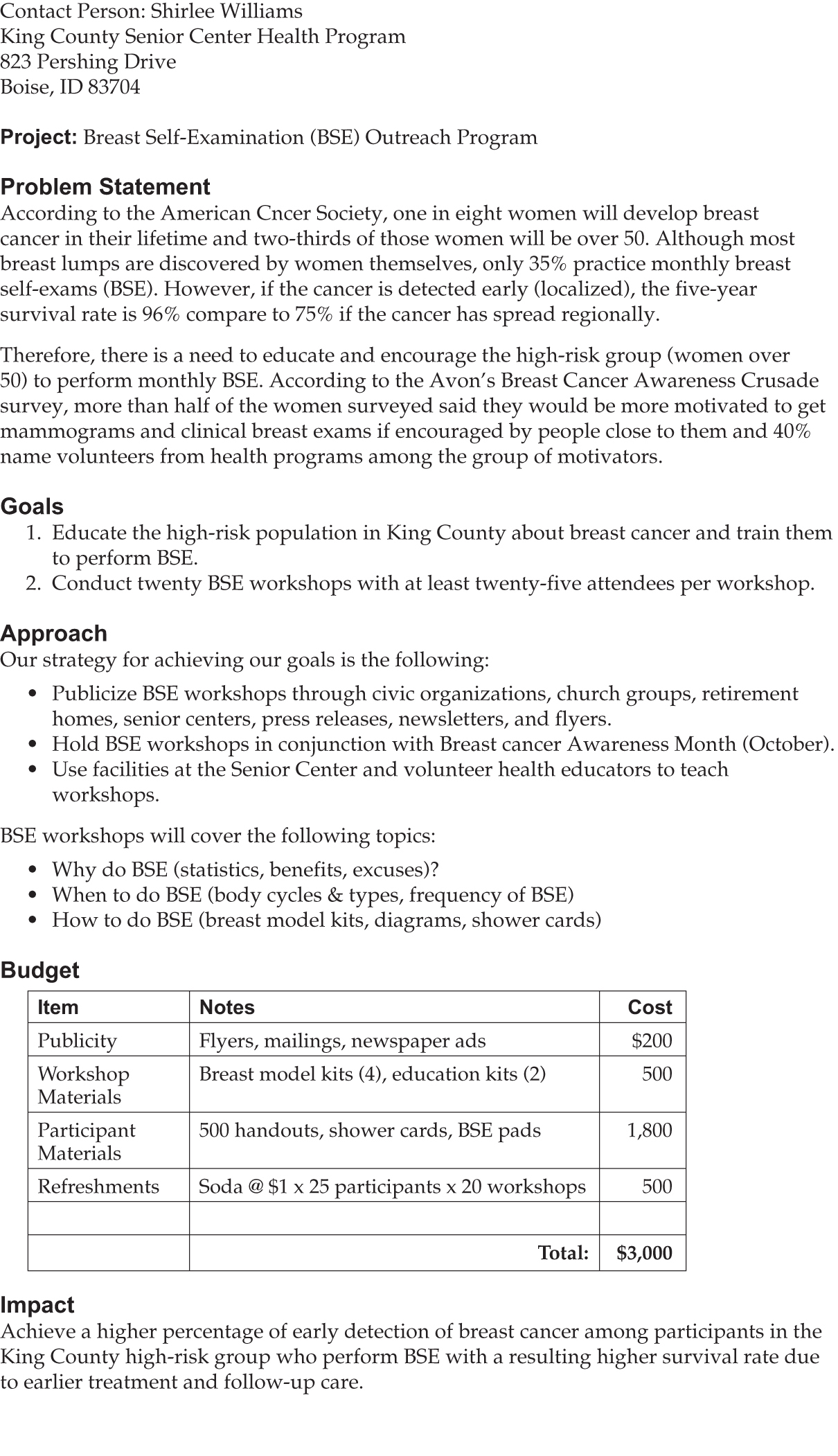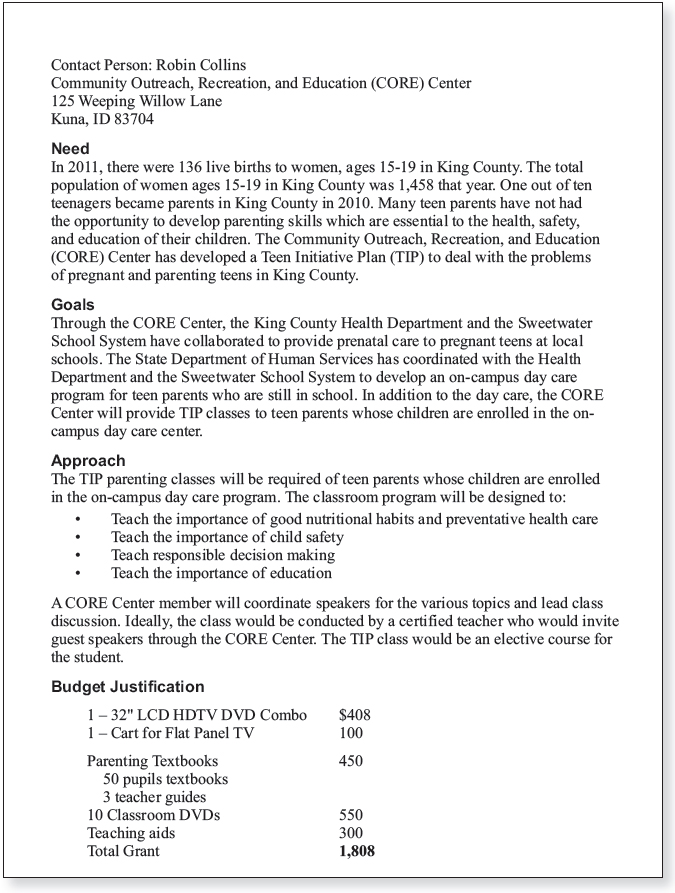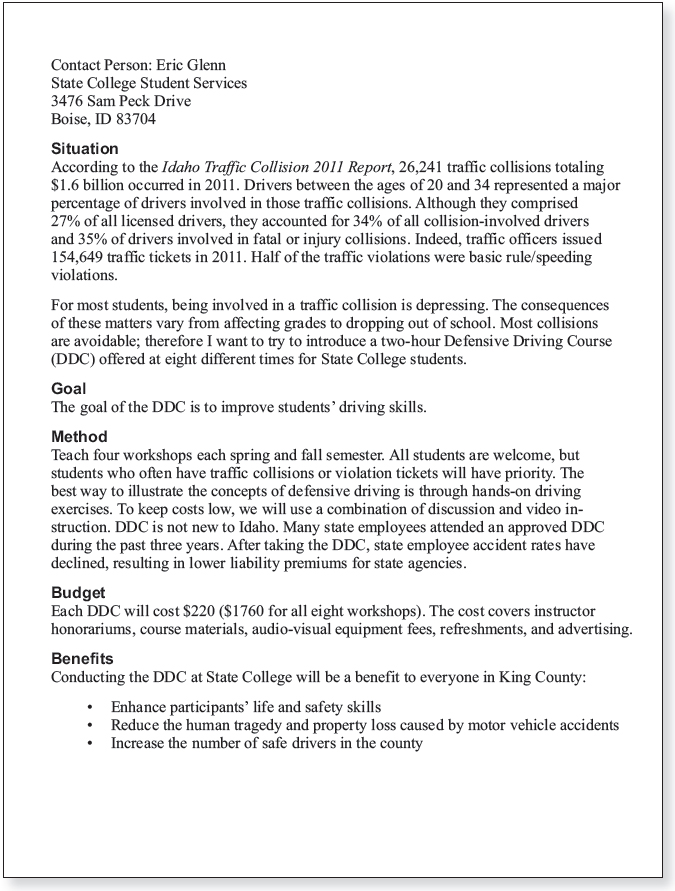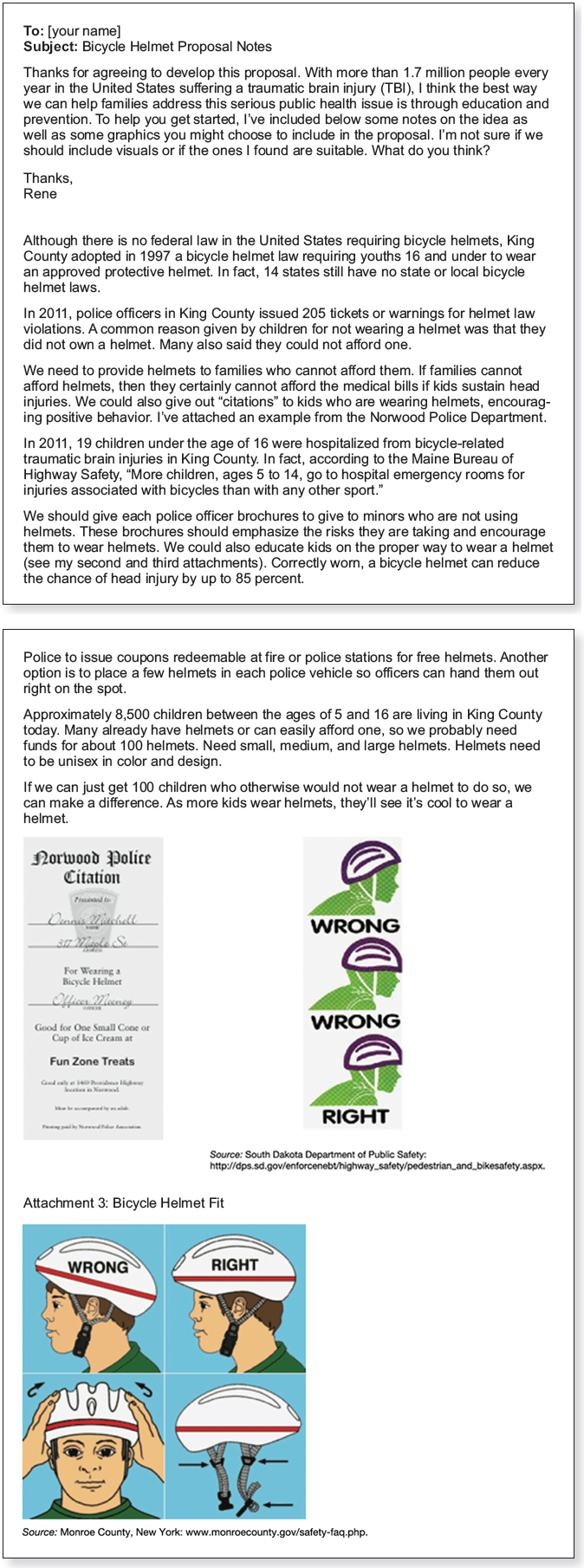Case 4 Proposals: Seeing Proposals through Reviewers’ Eyes
Case 4
Proposals
Seeing Proposals through Reviewers’ Eyes
The Situation
The Heathcot-Lynn Foundation is a charitable organization established in 2008 with assistance from the estate of Drs. Heathcot and Lynn Turner. Its mission is to provide a pool of philanthropic capital to fund a variety of wellness and prevention programs in Idaho. In 2011, the foundation awarded a total of $14,000 to seven nonprofit projects in Boise, McCall, Caldwell, and Weiser. Foundation recipients in 2011 included community-sponsored clinics, a domestic violence crisis line, a school-based childhood obesity program, and a tobacco-cessation program for hospitalized patients.
As a new social media intern, you are responsible for developing content for the foundation’s Web site, blog, microblog, and other social-networking sites. To familiarize yourself with the foundation’s work, you have been asked by the board of directors to review proposals submitted to the foundation. The vast majority of the foundation’s awards address four goals:
- To encourage innovative health and safety programs
- To improve the way health and safety services are provided to at-risk groups
- To foster collaboration among health and safety providers
- To support the teaching of healthy lifestyles
To help you evaluate each submission, the board of directors has given you the following evaluation criteria:
- Need for the project. Does the proposal describe specific gaps or weaknesses in health or safety services?
- Goal. Does the proposal clearly describe what the project will accomplish?
- Project approach. Does the proposal describe an effective method for accomplishing the goal?
- Cost. Can the project be accomplished with the proposed budget? Are all budget items justified in the proposal?
- Impact. If successful, who will benefit, and to what extent?
The board has also provided you with an example (Figure 4.1) of a winning proposal from last quarter. Included are brief comments from the reviewers.
“Unfortunately, we can’t fund all the deserving proposals we receive,” explains Jessica Bureau, the president of the foundation’s board. “The recent economic downturn has resulted in a tenfold increase in requests for funding. However, the board has allocated no more than $3,000 for awards this quarter. We want you to recommend which projects should be funded. When making award decisions, you may decide to fund a project fully, partially, or not at all.”

Need for project: Although a spelling error in the first sentence concerned some reviewers, all agreed that the writer uses quantitative data (for example, numbers and percentages) from a credible source to establish the project’s importance. The problem statement relates the project to foundation goals and uses survey data to suggest that the Senior Center is a strong candidate to conduct the project.
Goals: Succinctly explains what the project will accomplish by identifying the target population, indicating the project’s scope, and describing project events.
Approach: Approach is effective, covering publicity plans, the project’s timing, and cost-savings activities. Also demonstrates how the project will educate the target population by describing the content of the BSE workshops.
Cost: Uses a three-column table to clearly present a reasonably detailed budget. Dollar amounts are accurately totaled. Reviewers felt $500 was excessive for refreshments and not directly related to the project’s goals. As a result, the project was awarded $2,500.
Impact: Although wordy, this section clearly aligns the project with the foundation’s goals by stating how a King County at-risk group will be taught a healthy lifestyle skill that will likely increase the group’s survival rates.
The Challenge
After proposals are submitted and distributed to reviewers, they must be quickly read and evaluated. Then a consensus must be reached on which proposals should be funded and which should be rejected. This can be a daunting process when dozens of proposals, each hundreds of pages in length, must be reviewed. Consequently, clear, concise, and easy-to-read proposals—in other words, reviewer-friendly proposals—improve an organization’s chances of being funded. Your challenge, the same one all reviewers face, is to identify the proposals that have the best chances of furthering the funding source’s goals.
Your Job

To download electronic copies of documents in this chapter, click here.
The Heathcot-Lynn Foundation needs your help evaluating the most recent proposal submissions. You may be asked to do the following while working within the financial constraints outlined by the foundation:
- Evaluate proposals using the criteria established by the foundation, and recommend which, if any, projects should be funded.
- Reach a consensus with other reviewers, reflect on your review process, and provide online advice to proposal writers.
- Write email messages to each organization whose proposal you recommended be rejected or only partially funded.
- Develop a brief proposal.
Your instructor will tell you which of the tasks you are to complete.
You can view case documents at the bottom of each task below. To download copies of the documents that you can work with, click here.
Task 1 Evaluate Proposals
Jessica hands you four proposals (Documents 4.2, 4.3, 4.4 and 4.5) to evaluate. “Before you start,” Jessica says, “review the foundation’s goals and evaluation criteria as well as a winning proposal from last quarter” (Figure 4.1). She asks you to write the foundation’s board a memo in which you rank the submissions from best to worst, list monetary awards, and provide a concise justification for your recommendations.




Task 2 Reflect on the Review Process
After you have evaluated the proposals (Documents 4.2, 4.3, 4.4 and 4.5), meet with three or four other reviewers. Discuss the proposals, and reach a consensus on each proposal: whether it should be funded and, if so, what monetary award should be given. Jessica is also interested in the effectiveness of the proposal-review process. After reaching a consensus, hold a short debriefing session in which you consider the following questions:
- How did you read each proposal? Did you read in a linear fashion from top to bottom, or did you skip around and read sections out of order? Did you skim or skip any parts?
- In what ways did each reviewer’s background, personal beliefs, and interpretation of the evaluation criteria affect funding decisions?
- What aspects of the content, organization, and design of the proposals made reviewing them difficult? What made the task easier?
Jessica would like to offer proposal writers some advice on the Heathcot-Lynn Web site. Based on your discussion and experience as a reviewer, provide advice on how to write a successful proposal. “Don’t worry about building a Web page. Just email me a document with the content designed the way you want it to look online, and include notes to our Web designer regarding any additional online features you want included, such as links.”
Task 3 Respond to Proposals
The foundation’s board of directors asks you to write an email to each organization for whose proposal you recommended reduced or no funding (Documents 4.2 to 4.5). Jessica explains, “We don’t want to discourage these groups. Many of our best proposals come from groups who were first rejected and who then resubmitted revised proposals.” In your messages, remember to thank the individual for submitting a proposal, explain why the proposal received reduced or no funding, suggest ways of improving the proposal, and, if appropriate, encourage the organization to resubmit the proposal during the next quarter.
Task 4 Write a Proposal
After serving as a social media intern at the foundation for a semester, you resign and accept a job as a technical writer for King County Public Safety Department. You learn that the department wants to start a program to supply safety helmets to children under the age of 16 who cannot afford them. You mention that the Heathcot-Lynn Foundation might be a good funding source and volunteer to develop a proposal. Your supervisor, Rene Johnson, takes you up on your offer and sends you an email with the information she has collected (Document 4.6). Using her notes and other sources, write a proposal suitable for submission. Also, in a reply message to Rene, briefly justify your rationale for including or omitting visuals.

When You’re Finished
Reflecting on This Case In a 250- to 500-word response to your instructor, discuss (a) what you learned from this case, (b) how you could relate this case to work situations you will face in your chosen career, and, if applicable, (c) the ways in which this case compares to similar situations you have already faced at work. Your instructor will tell you whether your response should be submitted as a memo, an email, or a journal entry, or in a different format.
Moving beyond This Case Identify a health or safety issue affecting your community that interests you. Research this issue, and write a proposal suitable for submission to the Heathcot-Lynn Foundation.